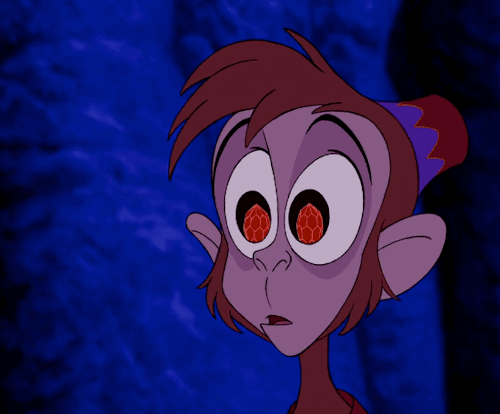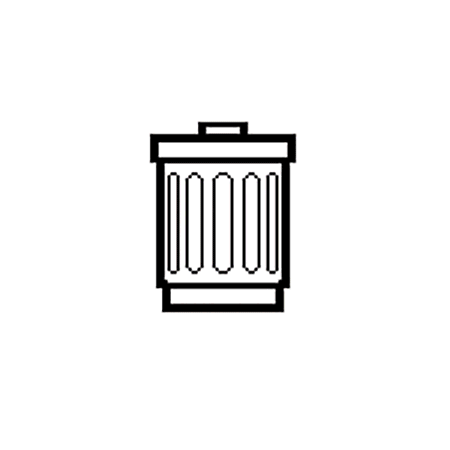Don't wanna be here? Send us removal request.
Text
OOH SHIT ..
NOT DONE! Silly me I forgot to put up my photo release prints..

Fresh print release by machine (USED)

Fresh print release by hand/spoon (USED)
With these prints to achieve this we took our collected items that we arranged and re-arranged on paper and took them into the printing room and photocopied them to produce a final flat image that would them be used for photo release print. The two prints are released onto Dutch Etching Paper and are transferred onto the Etching paper two ways. Both with a similar process to start with where we placed a clean piece of paper underneath the printed copies and faced them so the print was facing the ground. After doing that we sprayed a decent amount of Citro Clean over the back of our printed copies then either started to apply presser by hand with a spoon or ran it through the photo release printer until we got the desired image and effect we wanted.


1 note
·
View note
Text
REFERENCES
MANDY BARKER:
http://mandy-barker.com/
http://www.designboom.com/art/ocean-trash-photo-collages-by-mandy-barker/
http://www.smithsonianmag.com/science-nature/this-artist-turns-beach-trash-into-stunning-majestic-images-180954949/
WIM DELVOYE:
http://design-milk.com/carved-tires-by-wim-delvoye/
http://freshome.com/2011/09/20/creative-hand-carved-car-tyres-by-studio-wim-delvoye/
https://www.visualnews.com/2013/05/23/old-tires-carved-with-intricate-scrollwork/
JANE PERKINS:
https://www.ignant.com/2014/02/03/recycled-art-by-jane-perkins/
http://www.odditycentral.com/pics/jane-perkins-proves-one-mans-junk-is-indeed-anothers-treasure.html
PIET MONDRIAN:
http://www.theartstory.org/artist-mondrian-piet-artworks.htm
https://www.artsy.net/artist/piet-mondrian
https://www.moma.org/collection/works/78682

1 note
·
View note
Text
Task B- weekly reflection
WK 4
Reflection on my final outcome for TASK A.
My reflection on the final outcome for Task A would be that the message I wanted to go with the compositions came through. When making these compositions I fell in love with the plastic fork and made that the focus of the work by repeating it throughout all of them. Through repetition, scale, clustering and overlapping of the forks the viewers can see it is important to the work. The title may also have some input of its importance but I’ll let you decide that.. ‘Fork you!’.
Extending this work to become more I would collect more found raw materials and do the process again creating more compositions to add to the four I chose. Doing this I would imagine and hope that it would make the viewers see it isn’t all just repetition of the same materials, its a collection of them. OBVIOUSLY I would keep the forks in each new addition.. maybe collect all different types of discarded forks and make a whole series of fork art. To give the viewers a realisation of our consumption and improper waste of them.
Applying these strategies in the future I will now definitely have a better appreciation of them and form relationships. I enjoyed clustering and how it could easily hide and disguise what at the beginning was rubbish into beautiful artwork with a strong and meaningful issue that needs to be addressed behind it. That forces the viewers to feel emotional and disgusted in themselves.
If I had the chance to do something different with my work I would play more with the colouring of the last two compositions. I would do this so that my compositions as a whole would flow not just with similarity but with colour too. Overall my work in the end turned out to be better than I expected with the visual appeal.

Final Composition! UP ON THE WALL ! YAYAYAYAYA

1 note
·
View note
Text
Task B- weekly reflective task
WK 4
Reflective Task: In 250 words reflect on this workshop by highlighting 2 'critical' moments in your learning process (these could be practice or research).
Reflecting on the ‘critical’ moments this workshop I straight away think of the most difficult part of it all. Learning how to work though Adobe Photoshop and Adobe Illustrator. OMG!!! Trying to work out something that you had never touched in your life.. EVER and having to learn it and produce works through it for certain dates was pretty hard. Another critical moment for me was trying to settle with a composition and stay with it. Being so indecisive I kept changing my mind not only with the placement of the objects but with the colour of them and how my message of the mass pollution of rubbish would be conveyed to the viewers. With the research part I had no problem with because I used artists/ designers who I was already in love with and well aware of their works and the messages their works accomplish.

4 notes
·
View notes
Text
Task B- weekly research question and reflective task
PART TWO: Reflective task
WK 3
We took our analogue prints to digital and explored the digital manipulation through Adobe Photoshop and Adobe Illustrator. CONFUSING!! We focused on colour and tone with using only two colours. WHAT!! TWO!? Keeping our previous knowledge on form relationships such as negative space, tone, alignment, visual hierarchy, clustering, scale and cropping in mind. This task really got on my last nerve quite a few times. Having to pick only two colours, trying to make the work look visually appealing, plus I wanted all three of my works to look similar was getting to be quite tricky.
I knew I wanted to continue the repetition of the forks throughout all my compositions but that was all I had!! So I started duplicating the forks and positioning them around the page until I has what I wanted. I changed the colour of them trying to figure out which colour look best. Which was also a major pain because I am so indecisive. Finally I stumbled upon a blue colour that almost looked like transparent plastic. PERFECT!!
Colour in Duotone was an extremely hard decision. So many colours looked good together but I could only pick two. Experimenting with the different colours I decided that I would go with a black and blue. Together the colours made the forks look like translucent plastic forks.
Standing back looking at my work I decided to add more than just the repetition of the forks, it needed more depth to it. I looked through my recorded data and straight away noticed the target bag I had scanned. Placing the target bag behind the lined up plastic forks gave it more layers. EXACTLY WHAT I WANTED!
The blue and black made the creases in the target bag stand out more, providing some more tone into the work. In the composition I explored more of scale, clustering, repetition, alignment and the importance of negative space. AAAAH.

Composition number 3 COMPLETE :)))))

1 note
·
View note
Text
Task B- weekly research question and reflective task
PART TWO: Reflective task
WK 2
Using our scanned images we constructed our second composition using vector illustration. We focused on using colour and tone while only allowed to use three different colours. HARD RIGHT!!
My first go at this was good however it wasn’t something I had put a lot of thought into. I just thought these colours looked nice and I wanted to make something pretty. And it did look really pretty with its chequered back ground and the light pink and blue along with a darker purple to stand out. However it wasn’t something I would be completely happy with if I had handed it in. So I started from scratch! new colours and new objects from my recorded data.
I used a scrunched up subway napkin and an old bottle top. With a bright green background, black subway napkins clustered and duplicated and old beer tops woven between the napkins in bright pink to stand out through and on top of the black. Positioned down the bottom and up the side guiding the eye in a backwards L shape. I decided again after looking at the image with new and refreshed eyes that even though it was more than acceptable it wasn’t what I wanted. AHHH!! My third try at creating something that I thought was acceptable and what would make my work flow was successful. YAY!!
This composition consisted of forks, beer bottle tops and old rubber rings. At this point I had decided that the repetition of the forks would continue through out all my compositions and become the main focus. Keeping in mind the form relationships and the consistency I wanted in all my works I used layering, scale, overlapping, repetition, and a visual guide so that the viewers eyes travel from the top left down in a L shape.
When picking the colours I wanted them to be pushing on each other for the most attention. But levelling down for it. I selected three colours which I think did this best. Black, maroon/ purple and a creamy peach. OOOH!! The black obviously fighting for the most visual attention, then the maroon and ending with the peachy colour. Giving the eye a bread from the harsher colours and giving the composition a nice flow.

First composition background

First composition completed (not used)

Second composition completed close up (not used)

Second composition completed (not used)

Third composition experimentation with colours (not used)

THIRD COMPOSITION COMPLETED!!! (USED) :)

0 notes
Text
Task B- weekly research question and reflective tasks
PART ONE B: Research task
Find two artists that deploy compositional strategies in their work.
PIET MONDRIAN-
Dutch painter Piet Mondrian created 'pure' abstractions in the 20th century. Through his work he attempts to stimulate an emotional response by arranging the visual elements in a harmonic or dynamic arrangement. Piet Mondrian reduced the visual elements of his paintings to verticals, horizontals, rectangles and primary colours with black, white and grey. Mondrian's art was an attempt to discover a new language of universal relationships whose visual harmony could touch the human spirit. The subjective title of 'Broadway Boogie Woogie' pulls the viewers back into the realm of representation with its reference to Broadway in New York. It becomes hard to look at the work without connecting it to an aerial view of the traffic flow and buildings through Manhattan. Once creating the connection between the two the small squares become the movement of vehicles along the streets and the colour yellow refers to the New York taxis. This work is a testament to abstract qualities of this painting that still retains the power of to move us.



3 notes
·
View notes
Text
Task B- weekly research question and reflective tasks
PART ONE A: Research task
Find two artists that deploy compositional strategies in their work.
JANE PERKINS-
British artist Jane Perkins obtains her inspiration in found objects. She uses anything form shells, toys, buttons, jewellery, beads, LEGO pieces, etc. to re-create recognisable iconic paintings and people like DaVinci’s Mona Lisa, Albert Einstein and even the Queen. Perkins doesn’t add any colour to her work that wasn’t already placed there from the found objects. Jane Perkins strategically places the random objects of the right size, colour and shape a certain way to bring life and give the work an identical effect to the live original. From a distance the viewers can easily recognise the person or subject matter. But once closer, the artwork loses its mimetic properties and becomes an abstract arrangement of found/ unwanted objects. Perkins will often create a duplicate image, but using all different materials. Her works can never be re-created perfectly. Each is unique, while depicting the same person or subject in the same pose. This can be seen in her artworks ‘Pride’ and 'Pride II’.

'PRIDE’ By Jane Perkins

'PRIDE II’ By Jane Perkins




3 notes
·
View notes
Text
WK 1-
Studio: Recorded data scanned, printed then cut out and arranged and re-arranged until the desired look was achieved.





1 note
·
View note
Text
Task B- weekly research question and reflective tasks
PART TWO: Reflective task
A summary of my studio experimentation and making.. new techniques discovered.. and what I am thinking about the materials I’m working with.
Wk 1 task 1 we were told to collect rubbish from around the Wollongong campus. GROSS!! Who wants to collect garbage as a first year on their first day.. of their first class? NOT ME. BUT!! This task wasn’t just to be a top citizen it had a purpose and that was to collect raw materials.. plastic objects mostly to create composition through art (as seen in the earlier lecture). After collecting, washing, and drying the discarded objects of fellow university students we photographed, scanned and printed the wasted materials to make a form of data. Using the data we recorded of the trash, we then started working with collage..
Sooo, next was the long process of cutting out and re-arranging the junk until we found an arrangement that was pleasing to the eye. While working with collage many techniques were being re-discovered or/and discovered for the first time. While experimenting the creation of this collage I tried to be mind-full of the compositional techniques mentioned in the class lecture. Techniques such as: OVERLAPPING which creates the illusion of depth. BLEEDING when forms appear to leave the space, where they are CROPPED, creating the idea that something more is going on. CLUSTERING, grouping objects together creating a sense of connection between the forms within that group. VISUAL HIERARCHY where you use a point of focus, making the image readable. And REPETITION, which conveys a sense of movement, time and change through a work. (Refer to studio lecture notes week 1).
Concentrating on the compositional techniques of my work I experimented with arranging and re-arranging the scans of the found items. I used techniques like CLUSTERING, CROPPING, OVERLAPPING, REPETITION and SCALE. In my arrangement you can see CLUSTERING of a target bag, coffee lids, bottle tops and cigarette buts and the REPETITION and SCALE of forks. In my print I have deliberately used the negative space as a guide. The negative space acts as a force to push the materials collected forward and to guide the viewers eyes in a certain way. This is also known as VISUAL HIERARCHY (& can be seen in the following images).
In the beginning I found working with rubbish to be very disgusting, as I do not like handling others discarding refuse. However as the lesson progressed, my perception of these items changed. I saw the trash as raw materials and began to enjoy working with the unwanted object. I found it quite fascinating that I was trying to make garbage look aesthetically pleasing while at the same time brining awareness to the pollution of rubbish.

#cava101#cava102#pollution#composition#rubbish#art#lecture#creative art#visual art#bleeding#overlapping#repetition#clustering#visual hierarchy
3 notes
·
View notes
Text
Task B- weekly research question and reflective tasks
PART ONE B: Research task
Find two artists that use disposable materials in their work.. write 250 words each artist
WIM DELVOYE-
A Belgian artist who hand-carves used tires, transforming them from heavy black rubber rings into delicate, organic, lacelike designs. “I’m not interested in sculpting cubes or painting monochromes, its too easy. Art must fascinate people and doing easy things is not a good way to seek fascination.”- Wim Delvoye says. His works motif: Floral and Art Deco. Wim Delvoye has developed an art that offers a reinterpretation of artworks of the past while laying down a lucid and amused glance at contemporary society. The intricacy of the hand carved designs plays off the mass production origin of these objects. Devloye’s work shows the viewers that they’re iconic of modernity. We don’t think about them until they wear out and need replacing but modernity quite literally runs on them. Wim Devloye’s work is quite beautiful with flowers and vines however the viewer then realises... its just a tyre.




1 note
·
View note
Text
Task B- weekly research question and reflective tasks
PART ONE A: Research task..
Find two artists that use disposable materials in their work.. write 250 words each artist.
MANDY BARKER-
Mandy Barker focuses on marine plastic pollution. Through a series of photographs. ‘PENALTY’- one of latest pieces. Raises awareness of marine pollution by focusing attention on the football as an individual plastic object. Consisting of 992 marine debris balls collected from the sea or the shoreline that were found and sent in by the public. Her work makes the viewers question their actions or lack of towards pollution and its effects on marine life. Barker uses the negative space in her artwork to mimic an under water/ocean effect placing the viewers under with sea creatures for a brief moment. Letting the viewers see what the marine life live in. Barkers artwork aims to engage with and stimulate an emotional response in the viewers by combining a contradiction between initial aesthetic attraction and social awareness.
‘SHOAL’ - is another one of Mandy Barkers work which reveals evidence of marine plastic debris collected during the Japanese Tsunami Debris Expedition in June 2012.





0 notes
Text
CAVA101-102
HERE WE GO!!!
1 note
·
View note








